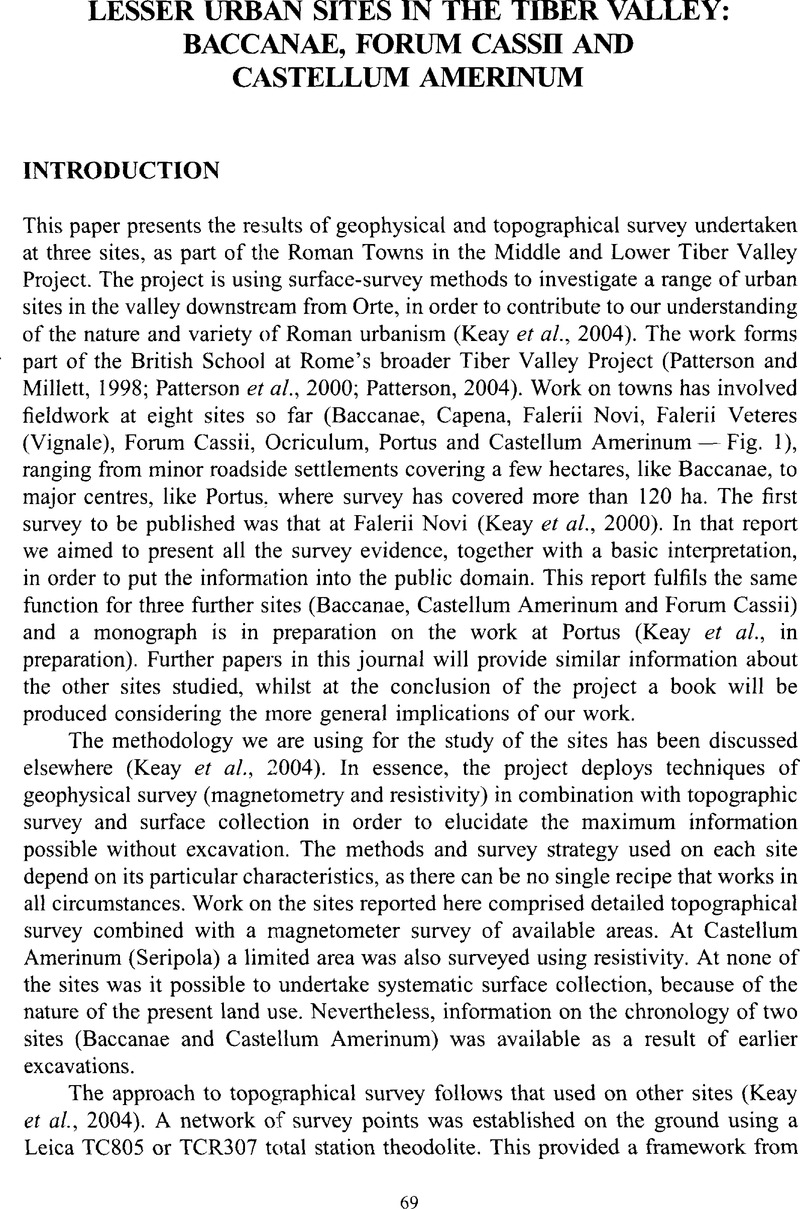Crossref Citations
This article has been cited by the following publications. This list is generated based on data provided by Crossref.
Patterson, Helen
Di Giuseppe, Helga
and
Witcher, Rob
2004.
Three South Etrurian ‘crises’: first results of the Tiber Valley Project.
Papers of the British School at Rome,
Vol. 72,
Issue. ,
p.
1.
Keay, Simon
Millett, Martin
and
Strutt, Kristian
2006.
An archaeological survey of Capena (La Civitucola, provincia di Roma).
Papers of the British School at Rome,
Vol. 74,
Issue. ,
p.
73.
Carlucci, Claudia
De Lucia Brolli, Maria Anna
Keay, Simon
Millett, Martin
and
Strutt, Kristian
2007.
An archaeological survey of the Faliscan settlement at Vignale, Falerii Veteres (province of Viterbo).
Papers of the British School at Rome,
Vol. 75,
Issue. ,
p.
39.
Hay, Sophie
Johnson, Paul
Keay, Simon
and
Millett, Martin
2010.
Falerii Novi: further survey of the northern extramural area.
Papers of the British School at Rome,
Vol. 78,
Issue. ,
p.
1.
Goffredo, Roberto
Ficco, Vincenzo
and
Costantino, Chiara
2013.
Ville e vici della valle del Carapelle (Puglia settentrionale).
Mélanges de l'École française de Rome. Antiquité,
Rajala, Ulla
2014.
Sophie Hay, Simon Keay and Martin Millet. Ocriculum (Otricoli, Umbria): An Archaeological Survey of the Roman Town (Archaeological Monographs of the British School at Rome 22. London: The British School at Rome, 2013, 169pp., 108 b/w illustr., 18 tables, pbk, ISBN 978-0-904152-67-8).
European Journal of Archaeology,
Vol. 17,
Issue. 4,
p.
745.
Tol, Gijs
de Haas, Tymon
Armstrong, Kayt
and
Attema, Peter
2014.
MINOR CENTRES IN THE PONTINE PLAIN: THE CASES OF FORUM APPII AND AD MEDIAS.
Papers of the British School at Rome,
Vol. 82,
Issue. ,
p.
109.
Keay, Simon
and
Millett, Martin
2016.
A Companion to Roman Italy.
p.
355.
Barone, Pier Matteo
Wueste, Elizabeth
and
Hodges, Richard
2020.
Remote Sensing Materials for a Preliminary Archaeological Evaluation of the Giove Countryside (Terni, Italy).
Remote Sensing,
Vol. 12,
Issue. 12,
p.
2023.
Cordiano, Giuseppe
2021.
Il martirio in epoca severiana di S. Alessandro presso Baccano lungo la via Cassia tra testimonianze agiografiche e dati archeologici.
Erga-Logoi. Rivista di storia, letteratura, diritto e culture dell'antichità,
Vol. 9,
Issue. 2,



